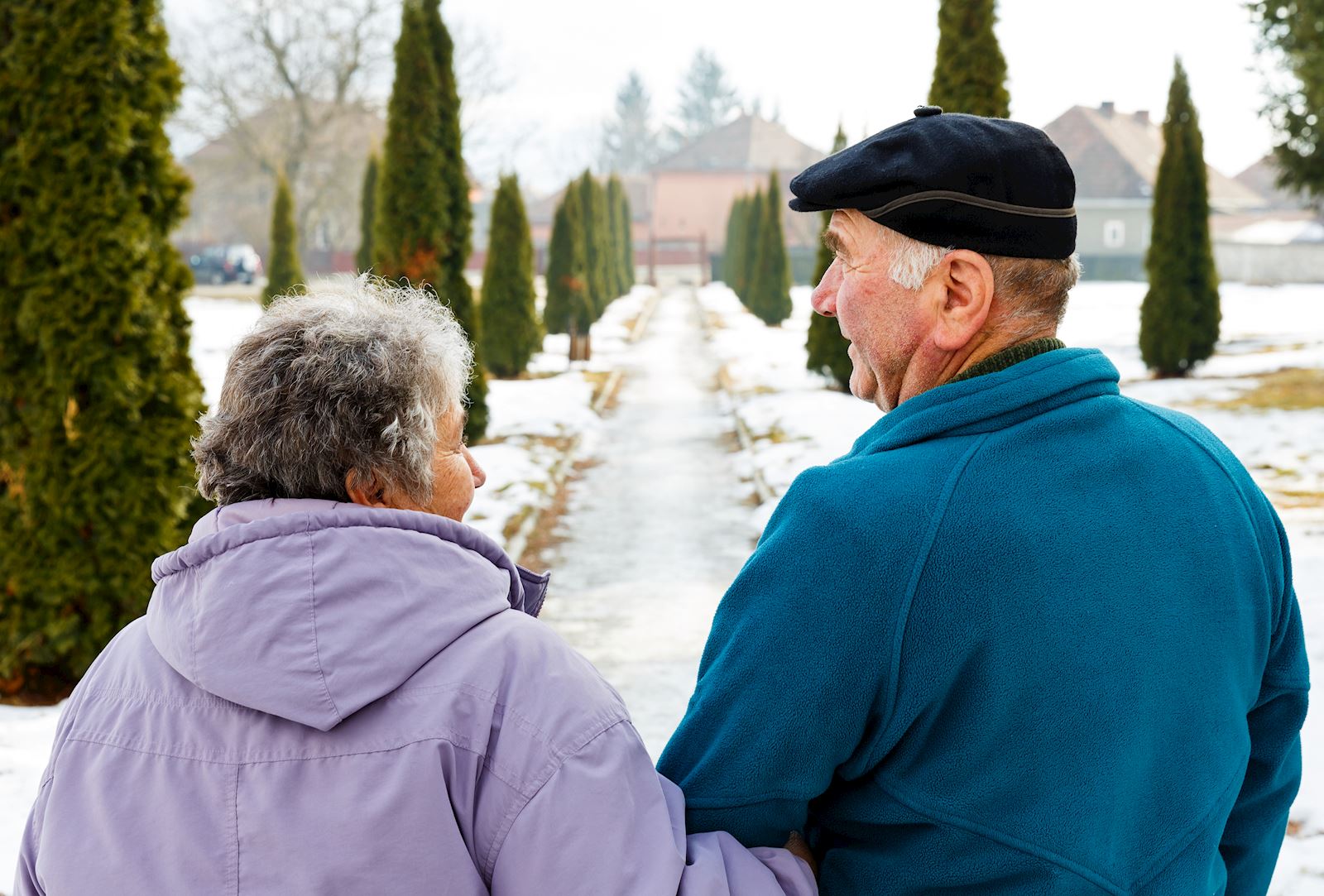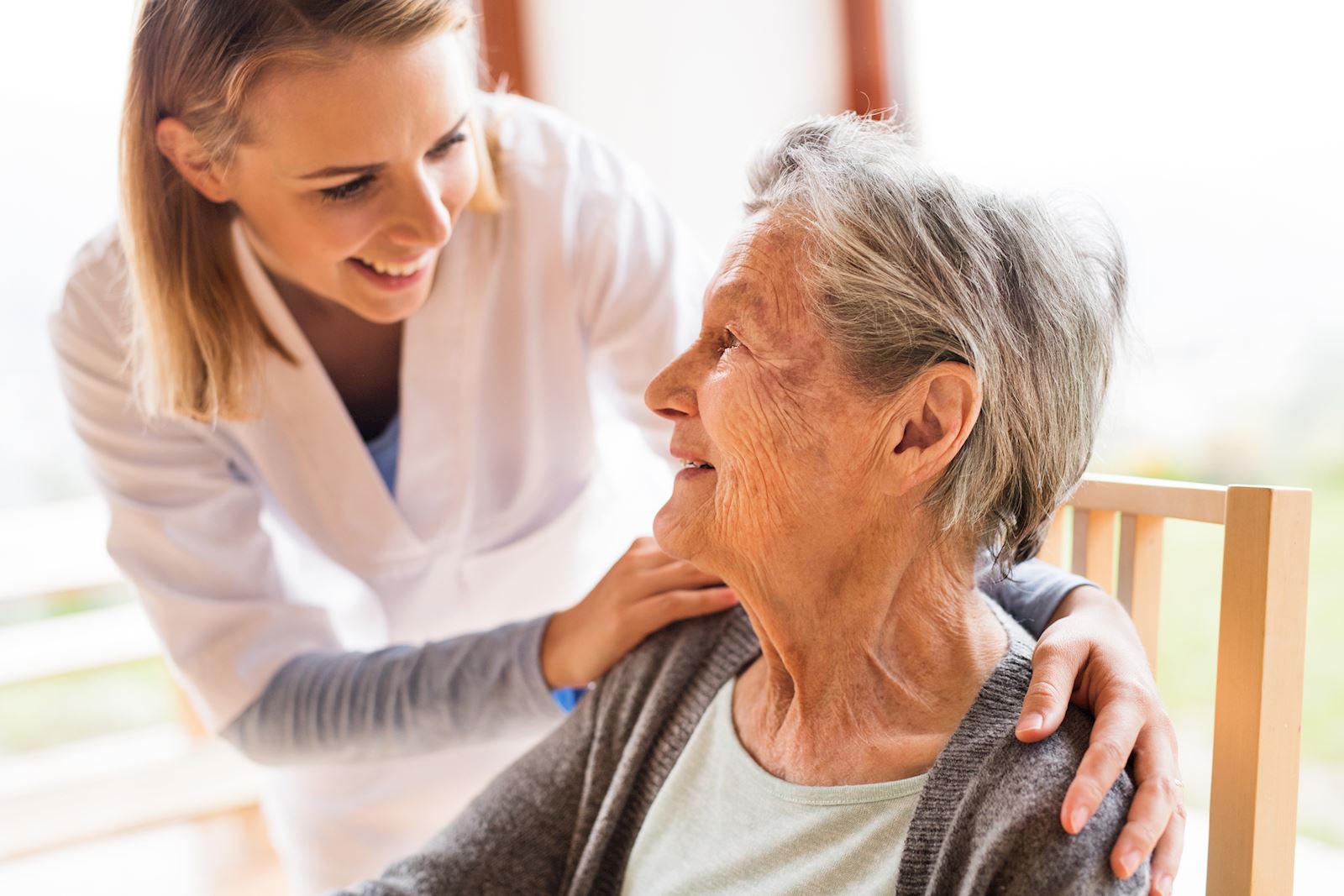Winter months can mean colder temperatures. Hazardous conditions from snow and ice can make the season especially dangerous for older adults. However, with a little preparation, you can be ready for the challenges that can often come with this time of year.
Keep warm inside
Older adults can lose body heat quickly and it can be more difficult to maintain your body temperature during the winter months. Living in a house or apartment that is too cold can leave you vulnerable to hypothermia. Dress warmly, even if you are staying in the house, and make sure your heating is keeping your home warm. Set your thermostat to a least 68 to 70° F and double-check that windows and doors are closed tightly.
Bundle up outside
If you need to venture outside, check the forecast and dress for the weather. Be sure to avoid having to spend too long in high winds or colder temperatures and keep in body heat by wearing a hat, gloves and scarf. Layering clothing is important to staying warm, while still feeling comfortable.
- Base layer: Choose light fabrics like silk or nylon
- Middle insulating layer: Cotton or wool
- Top outside layer: Fleece or down
Know the warning signs of hypothermia
When you are out in the cold for an extended period, your body begins to lose heat quickly, causing your body temperature to drop. Hypothermia is what occurs when your body temperature drops below 95°F. This is especially dangerous for older adults, who can be left vulnerable to heart attacks, kidney problems and liver damage.
Common warning signs of hypothermia include:
- Cold skin that looks pale or ashy, puffy or swollen face
- Feelings of tiredness
- Slurred speech
- Confusion or weakness and slowed breathing or heart rate
For someone experiencing these symptoms, it’s important to call 9-1-1 right away and then help raise their body temperature with blankets and coats and warm drinks. Do not use a heating pad or place them in a bath.
Avoiding slipping on the ice
Winter months can often bring snow and ice, causing slick roads and sidewalks that are especially treacherous for older adults. More than 95% of hip fractures are caused by falling, and a bad slip could also lead to head trauma or other broken bones or injuries.
Purchase a pair of shoes with good traction or non-skid soles to wear when there is snow on the ground or icy sidewalks. You can also find inexpensive ice cleats that slip over your regular shoes to provide instant grip on icy surfaces. You will also want to avoid bringing the winter conditions into your home, where snow melt could lead to slippery floors. Make a point to leave your shoes outside the door or have a designated mat where wet boots and gear can dry.
Be prepared for power outages
The worst winter storms can lead to a temporary loss of power. To help prepare for this:
- Make sure your cell phone is fully charged
- Keep a stockpile of blankets and warm clothing
- Have flashlights and a battery-powered radio on hand
- Stock up on non-perishable food items, like granola bars, crackers, water, powdered or shelf-stable milk, and cereal in case the outage lasts long enough to spoil the food in the refrigerator
- If you have a wood burning fireplace, have your firewood stocked and matches on hand
Make sure you have enough of your medications to last several days if road travel is not permissible.
Winterize your vehicle
If you or your loved one drives a vehicle, you’ll want to make sure that it is serviced before winter arrives. This includes checking the tires, brakes, battery, oil and antifreeze levels and ensuring the heater and defroster are working properly. Keeping your gas tank at least half full during the winter months can also prevent a frozen fuel line.
Plan accordingly for inclement weather and pack your vehicle with:
- Blankets
- Extra clothing
- Shovel
- Ice scraper
- Flashlight (Don't forget fresh batteries)
- First aid kit
- Jumper cables
If you must travel in snow or ice, let the car run for several minutes before driving to allow the defrosters to thaw the windows. Remove any snow from the top of the vehicle to prevent it from falling and obstructing your view as you get moving down the road.
Check your carbon monoxide detector
In the winter, you are more likely to use a fireplace and gas heater, which places you at greater risk of carbon monoxide poisoning. Be sure to check the batteries in your carbon monoxide detector or purchase a new one to ensure you or your loved one is safe. Most manufacturers recommend replacing your carbon monoxide detectors every five to seven years.
Keep these tips handy as a reminder before each winter season starts, so you can be better prepared before the snowflakes fly. Then get cozy with a good book, a warm beverage and enjoy the winter views.



